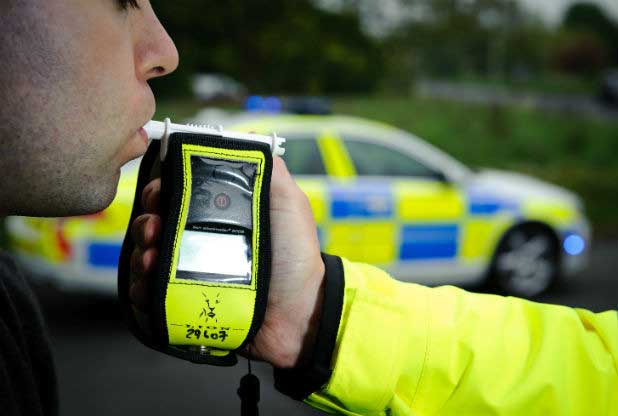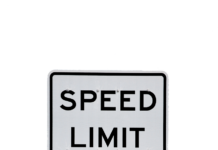
Despite lockdown restrictions, roughly 118 drink-drive arrests were made PER DAY last December (1)
- Last December, roughly 3,667 drink driving arrests were made, despite the UK being in a national lockdown, according to FOI data
- More than half (53%) of UK drivers attending Christmas parties hope to attend more events this year than in 2020 when lockdown restrictions were in place
- Half (50%) of UK drivers admit to driving after having an alcoholic drink, and almost a third (32%) say they’ve driven the morning after drinking when potentially still over the limit
- Morning after calculator aims to help to clear up any confusion as almost one in six (16%) of UK drivers are confused about how long it takes for alcohol to leave the body.
Motorists are urged to be cautious this party season and think before getting behind the wheel as drink-driving offences remain high across the UK.
Data from Confused.com reveals that December remains a prolific month for drink-driving offences, with approximately 3,667 UK drivers caught behind the wheel last year(1). This means that, on average, 118 drink-driving arrests were made per day last December, despite the UK being in a national lockdown for the majority of the month.
That’s according to new data obtained by Confused.com through Freedom of Information requests to UK police forces. The data shows the UK’s worst offending areas, with the Metropolitan Police (2), Scotland, West Yorkshire and Humberside Police all leading on drink-driving arrests, exceeding the national average.
Further research suggests that drink-driving offences could be on the rise this party season. More than half (53%) of UK drivers who will be attending Christmas parties said they plan to attend more events this year than in 2020. And it seems that some drivers are open to taking the risk, as half (50%) of UK drivers admitted to driving after having an alcoholic drink.
Drivers should be aware that it’s not just having a drink and driving that could land them in hot water. Almost a third (32%) said they had driven the morning after drinking, even though they weren’t sure whether they were within the legal limit. With this in mind, Confused.com has created a morning after calculator to help drivers make informed decisions on when it’s safe to drive the day after drinking.
And although the UK still has some restrictions in place, there’s cause for concern that pre-pandemic trends might be back on the rise. Data gathered from 2019 showed that in December, approximately 5,510 drink-driving arrests were made across the UK, equivalent to 178 per day, on average. Although the 2019 data is significantly higher in comparison to 2020 (+50%), the statistics remain shockingly high.
The concerns around a rise in drink-driving offences could be justified, as a number of UK drivers plan on making the most out of their freedom this winter. Almost two-fifths (39%) of drivers who are attending more events this year said they wanted to make up for lost time during the pandemic. And over a third (34%) also said that they wanted to socialise as much as possible.
However, many drivers are aware of the risk of drinking and driving this time of year. Nearly two-fifths (37%) of UK drivers admitted they’re more cautious about being pulled over by police during the Christmas period.
Despite this, around six in 10 people (60%) who have driven after a drink claim they did so as they knew they were within the legal limit. Drivers also said have driven after a drink because:
- They only one or two drinks (44%)
- They felt sober and in control (39%)
- They didn’t have far to go (23%)
- They had a big meal before driving (19%).
But, one in eight (12%) of UK drivers admitted that there is still some confusion about how much they can drink before getting into a vehicle, with almost one in six (16%) also unaware of how long it takes for alcohol to leave the body. When trying to work out whether they’re within the limit, over two-fifths (45%) of drivers said they’d consider how much food they’ve eaten. Nearly a third (29%) said they’d consider their weight/height as a deciding factor, and a quarter (25%) would consider their metabolism.
And even when driving after a night out, people are still needing to make a call on whether they’re safe to drive. Worryingly, almost three-fifths (57%) judged their ability to drive based on how they felt that morning. And over half (55%) assumed that the alcohol they’d consumed the night before had worn off after they had slept.
As people start to plan their winter parties and social events over the next few weeks, drivers are reminded to keep in mind how they plan on travelling to and from their destinations. More than two in five (43%) UK drivers think that people are more likely to drink-drive around this time of year. So, although many might use December to let their hair down and socialise before the end of the year, it’s important to be sensible if you’re thinking of getting behind the wheel.
Alex Kindred, car insurance expert at Confused.com, comments: “Last Christmas was spent in a national lockdown, meaning millions of people across the UK were unable to attend their Christmas party celebrations. With this year looking slightly different, it’s important that we enjoy ourselves, but remember to keep ourselves and each other safe too.
“The Christmas party season is notorious for drink-driving offences, so it’s important that we get home safe after we’ve called it a night. Our advice: if you’re drinking, don’t drive. If you’re driving, don’t drink. If you’re with someone who might be over the limit, don’t let them get behind the wheel. And the morning after your night out is also really important. Be sure you’re in a fit state to drive before getting behind the wheel. Our morning after calculator should give you a rough indication of when you could be safe to drive.”
Help keep news FREE for our readers
Supporting your local community newspaper/online news outlet is crucial now more than ever. If you believe in independent journalism, then consider making a valuable contribution by making a one-time or monthly donation. We operate in rural areas where providing unbiased news can be challenging. Read More About Supporting The West Wales Chronicle

























